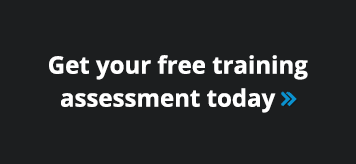 The rise of technology in our everyday lives has changed (and continues to change) how we communicate. If something’s worth saying, it’s worth saying in 140 characters or less.
Why stay up for the 10 p.m. news? We have up-to-date news coverage available 24 hours-a-day on a device that will fit in our pocket. And it’s changing the way we learn as well.
The rise of technology in our everyday lives has changed (and continues to change) how we communicate. If something’s worth saying, it’s worth saying in 140 characters or less.
Why stay up for the 10 p.m. news? We have up-to-date news coverage available 24 hours-a-day on a device that will fit in our pocket. And it’s changing the way we learn as well.
Last month, my son’s middle school soccer team decided they were all going to wear bow ties to school—and clip-on bow ties were definitely not acceptable. The night before he planned to wear it to school, I sat helplessly with a strip of cloth in my hand and just looked at him. “Don’t worry, Mom. Just YouTube it.”
So I did. One five minute video (which admittedly, I had to watch a few times) and a little bit of practice, and that kid looked amazing with his very professional bow tie.
This is next generation learning.
We are living in a modern world where there is no limit to what we can learn. You’d be hard-pressed to come up with a task to complete that you couldn’t learn from a YouTube video. I mean, not only can I tie a bow tie, but I can fix a garbage disposal as well, thanks to the internet.
It’s an exciting time, but, in the workforce, it calls for us to look at how we approach training. We’ve become accustomed to learning through these quick bites of information, and when that’s the new normal, it’s hard to sit through training that lasts for hours.
According to Statistic Brain, our attention spans are decreasing each year…
- The average attention span in 2000: 12 seconds
- The average attention span in 2015: 8.25 seconds
- The average attention span of a gold fish: 9 seconds
- Average length watched of a single internet video: 2.7 minutes
…so we have to be able to catch our learner’s attention and get them the information they need quickly.
Enter microlearning
Microlearning consists of short, focused lessons (usually five minutes or less) designed to meet very specific needs. Most microlearning is media-rich and is developed for online viewing—especially for mobile platforms. Think videos, audio clips, animations…
Learners are able to pick from a menu of lessons and choose to only engage in the most necessary training. Because they’re in control of when and what they learn, they’re often more eager to seek out the training they need.
Microlearning is convenient, and it allows you to fine-tune the training your employees get. There’s no need for your entire staff to sit through a three-hour training session when each person may only need certain parts of that training. It’s also an easy way to fill in retention gaps for employees who need a quick refresher on how to perform a task that they may not practice daily.
Microlearning allows people to get the training that they need without losing productivity (Sound familiar? That’s because we offer this type of fine-tune training in-house, too).
What could you gain if you were able to get information into your employees’ hands in the same time it takes for them to fix their morning coffee? The best way to find out is through an initial training assessment.

So what are you waiting for? Get connected with your training partner, and find out just how much time and productivity you can save for your business.
About the Author

Angela joined MainSpring in 2015 as a technical writer and e-Learning developer. She specializes in training development and coordination. As an active member of the Association for Talent Development (ATD), Angela stays current on new research and trends in training and employee development. Angela enjoys listening to live music, chauffeuring her sons to activities, baking, reading, and coloring–but ALWAYS inside the lines
